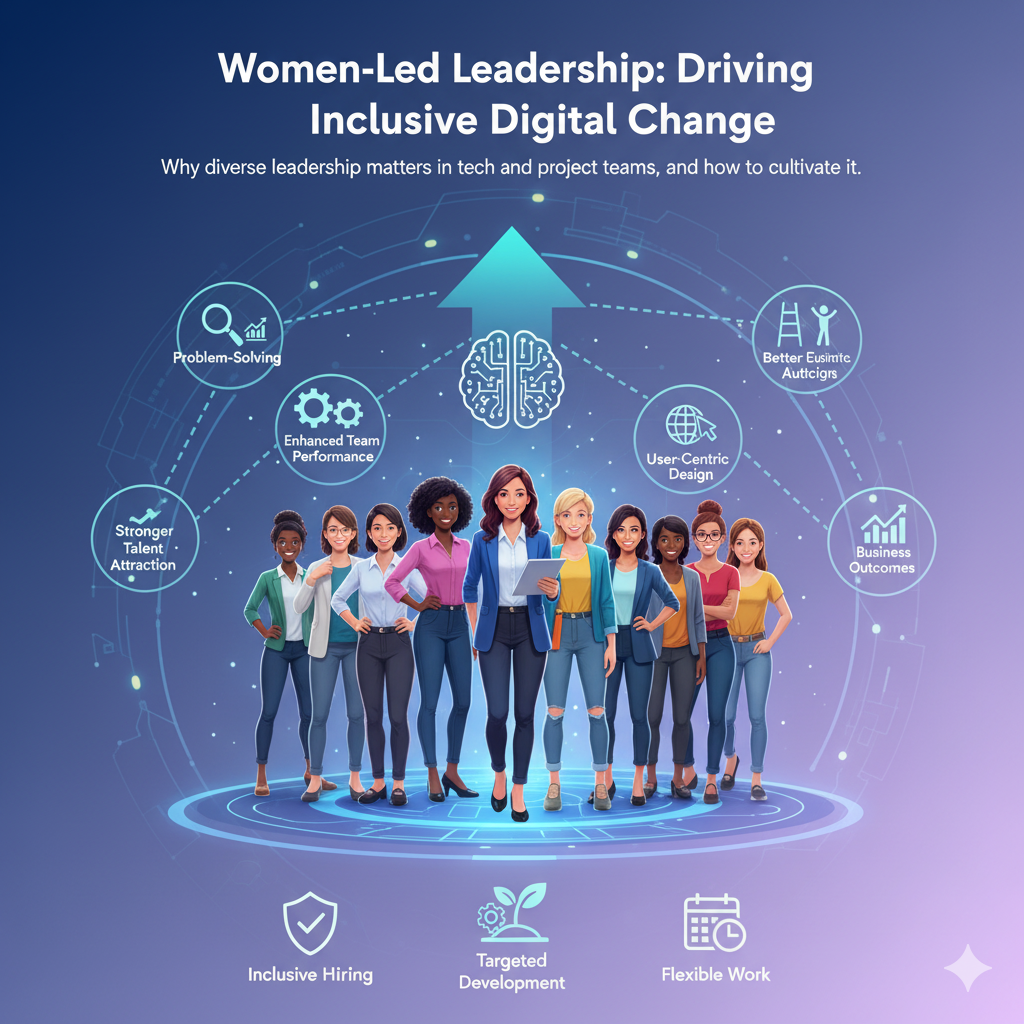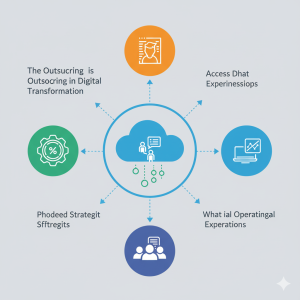The digital transformation era is not just about technology; it’s fundamentally about people. As organizations navigate unprecedented technological shifts, the need for diverse perspectives, empathetic leadership, and inclusive strategies has never been more critical. At the forefront of this movement are women-led leaders, who are increasingly proving to be powerful catalysts for driving truly inclusive digital change.
Historically underrepresented in tech and leadership roles, women bring unique strengths and experiences that are vital for building resilient, innovative, and human-centric digital solutions.
Why Diverse Leadership (Especially Women-Led) Matters in Tech and Project Teams
- Broader Problem-Solving and Innovation:
- The Issue: Homogenous teams tend to approach problems from similar angles, potentially overlooking crucial insights.
- The Impact of Diversity: Women leaders, often bringing different life experiences, communication styles, and problem-solving methodologies, challenge the status quo. This leads to more comprehensive ideation, robust solutions, and fosters a culture where innovative ideas can come from anywhere. Digital products built by diverse teams are more likely to resonate with a diverse user base.
- Enhanced Team Performance and Collaboration:
- The Research: Studies consistently show that diverse teams outperform non-diverse teams in terms of innovation, decision-making, and financial returns. Women leaders are often cited for strong collaborative skills, mentorship, and fostering psychological safety within teams.
- The Impact: In the complex, interdisciplinary world of digital projects, collaboration is key. Women-led teams often exhibit higher levels of trust, open communication, and shared purpose, translating into smoother project execution and more engaged team members.
- Improved User-Centric Design and Inclusivity:
- The Issue: If your product design and development teams lack diversity, they risk creating solutions that cater only to a narrow segment of the population, missing out on vast market opportunities or even inadvertently perpetuating biases.
- The Impact: Women leaders are more likely to champion inclusive design principles, advocating for features and experiences that serve a broader audience. Their insights can help prevent gender-biased algorithms, exclusionary user interfaces, or missed opportunities for accessibility.
- Stronger Talent Attraction and Retention:
- The Challenge: The tech industry struggles with attracting and retaining women. Lack of representation at the top is a significant deterrent.
- The Impact: Visible women leaders serve as powerful role models, signaling to aspiring female talent that there are clear paths for growth and advancement. This, combined with an inclusive culture fostered by diverse leadership, helps attract a wider pool of talent and reduces attrition across the board.
- Better Business Outcomes:
- The Evidence: Numerous reports from McKinsey, Catalyst, and others highlight a strong correlation between gender diversity in leadership and improved financial performance, employee engagement, and brand reputation.
- The Impact: Inclusive digital change, driven by diverse leadership, leads to more effective strategies, better-executed projects, and ultimately, a more profitable and sustainable business.
How to Cultivate Women-Led Leadership and Inclusive Digital Change
Cultivating diverse leadership isn’t just about hiring; it’s about building an ecosystem that supports, empowers, and elevates women throughout their careers.
- Champion Sponsorship Programs: Beyond mentorship, sponsorship involves senior leaders actively advocating for women, putting their names forward for promotions, and ensuring they get high-visibility projects.
- Implement Inclusive Hiring Practices:
- Bias Training: Train hiring managers and interviewers on unconscious bias.
- Diverse Interview Panels: Ensure women are part of the interview process for all roles, especially leadership positions.
- Gender-Neutral Job Descriptions: Use language that attracts a broader pool of candidates.
- Provide Targeted Development and Training: Offer leadership development programs specifically designed to address challenges women might face in their career progression, such as negotiation skills, executive presence, and strategic thinking.
- Foster Flexible Work Environments: Digital roles often lend themselves to flexibility. Offering remote work options, flexible hours, and supportive parental leave policies can significantly improve retention and enable women to balance career and personal responsibilities.
- Create Psychological Safety and Allyship:
- Zero Tolerance for Harassment/Discrimination: Establish clear policies and enforce them rigorously.
- Allyship Programs: Encourage male colleagues to become active allies, speaking up for women and challenging non-inclusive behaviors.
- Employee Resource Groups (ERGs): Support women-focused ERGs that provide networking, mentorship, and a safe space for discussion.
- Measure and Report Progress: Set diversity goals, track key metrics (representation at different levels, promotion rates, pay equity), and transparently report on progress. What gets measured gets managed.
- Amplify Women’s Voices: Actively seek out and promote women’s contributions in meetings, presentations, and industry events. Ensure their insights are heard and valued.
Conclusion
The future of digital transformation is inherently inclusive. Organizations that recognize and actively cultivate women-led leadership are not just doing the right thing; they are positioning themselves for greater innovation, stronger performance, and more meaningful impact. By breaking down barriers and building bridges, we can empower women to drive the digital change that truly benefits everyone.




